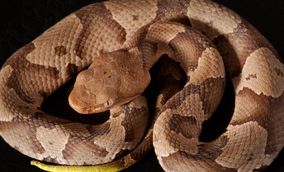Laurie Anne Walden, DVM  Dental radiography (x-ray imaging) is an important diagnostic tool for pets, just as it is for people. Animals don’t always show signs of mouth pain, and radiographs may be the only way to know there’s a problem. Most dental disease in dogs and cats happens under the gumline, where it’s hidden from view. In published studies, radiographs revealed disease in apparently healthy teeth in 27.8% of dogs and 41.7% of cats. Dental radiographs find problems that can’t always be seen on a physical examination:
Radiographs also guide dental procedures in pets. For example, some dog and cat teeth have curved roots, extra roots, or roots that extend very close to the jawbone. It’s best to know about these issues before trying to extract these teeth. In animals, dental radiography requires general anesthesia or sedation. The radiographs use sensors or small film cassettes placed inside the mouth, and animals can’t wiggle during the procedure. Imagine putting an x-ray sensor between your dog’s teeth and politely asking her to lie still and not chew on it. Now imagine asking your cat the same thing. Dental radiographs are often obtained while a pet is already under anesthesia for a dental procedure. Dental radiography delivers a very small radiation dose to the patient. The American Veterinary Dental College reports that “the radiation risk to the patient from taking dental radiographs is minimal.” Like people, pets benefit from having full-mouth dental radiography from time to time to be sure no problems are lurking under the surface. Oral imaging may also be indicated in pets with these conditions:
Photo by muhannad alatawi Laurie Anne Walden, DVM  Juvenile southern copperhead. Photo by James Gathany, CDC. Juvenile southern copperhead. Photo by James Gathany, CDC. It’s snake season in North Carolina. Snakes are most active in the early spring through fall, and dogs that accidentally disturb snakes sometimes get bitten. Although a bite from a venomous snake is a medical emergency, try not to panic if it happens to your dog. North Carolina snakes North Carolina is home to about 37 snake species. Most are nonvenomous. Don’t run for the hoe if you see a snake in your yard; chances are it’s a nonvenomous snake that’s helping control the rodent population. Six venomous snake species live in North Carolina: copperheads, cottonmouths, 3 rattlesnake species, and coral snakes. Copperheads are by far the most common. In our state, venomous snakebites are usually from copperheads. Rattlesnakes and possibly cottonmouths can also be found in the Piedmont. Coral snakes are rare and live in the southeastern part of the state. See photos of NC snakes here: http://herpsofnc.org/snakes/. Symptoms of snakebite Nonvenomous bites: Nonvenomous snakes may bite if they are provoked. These bites may look like small abrasions or punctures in the shape of a horseshoe (if they’re visible at all). Venomous snakes sometimes bite without injecting any venom. Nonvenomous bites typically don’t require medical attention unless they become infected. Venomous bites: Venomous bites are easy to diagnose if you see a snake bite your dog. Diagnosis is a little trickier if the bite isn’t witnessed. Fractures, abscesses, and insect bites can cause symptoms similar to those of snakebite. Copperheads, rattlesnakes, and cottonmouths are all pit vipers belonging to the family Crotalidae. These snakes inject venom through 2 long fangs. The puncture wounds might or might not be visible through a dog’s fur. Crotalid venom causes significant tissue damage at the bite site. Copperhead venom is typically less toxic than rattlesnake and cottonmouth venom. The severity of symptoms depends on the size of the dog, the amount of venom delivered, and the location of the bite (for example, bites to the face or neck can cause swelling that obstructs breathing). Symptoms that usually appear right away include the following:
Crotalid venom can also interfere with blood clotting. The venom of some rattlesnake species (not native to North Carolina) damages the nervous system. Coral snakes are in the family Elapidae, like cobras and mambas. Elapid venom targets the nervous system and can paralyze the muscles of breathing. Bites from coral snakes are serious medical emergencies but luckily are very rare. If your dog is bitten by a snake Stay as calm as possible; this will help your dog stay calm too. Limit your dog’s movement by carrying him to your car (if possible) instead of having him walk. Snakebites can be extremely painful, so you may need to muzzle your dog before handling him to prevent him from biting in response to pain. Take your dog to a veterinary hospital without delay. Treatment of crotalid bites depends on the severity of symptoms, and your dog will probably need to be hospitalized. Copperhead bites do not necessarily require antivenin. The decision to use antivenin depends on the individual case and the severity of symptoms. Do not try first aid techniques that you might have read about. These can worsen the tissue damage caused by crotalid venom and delay transport to a veterinarian.
Don’t try to kill or capture the snake. You risk being bitten yourself if you do. Snake identification is not necessary for treatment. Nearly all venomous snakebites in Mecklenburg County are from copperheads, but the treatment is similar for all pit viper bites. Crotalid antivenin is polyvalent, meaning the same antivenin treats copperhead, rattlesnake, and cottonmouth bites. Preventing snakebites The best way to avoid being bitten is to leave snakes alone. Copperheads are not aggressive and do not typically bite except in defense. Dogs may stumble upon snakes by accident, though, so take the following measures to reduce the risk:
For more information, check out the Snakes of North Carolina section of the NC Cooperative Extension website and the Carolinas Poison Center website. Image credit: CDC/James Gathany |
AuthorLaurie Anne Walden, DVM Categories
All
Archives
June 2024
The contents of this blog are for information only and should not substitute for advice from a veterinarian who has examined the animal. All blog content is copyrighted by Mallard Creek Animal Hospital and may not be copied, reproduced, transmitted, or distributed without permission.
|
- Home
- About
- Our Services
- Our Team
-
Client Education Center
- AKC: Spaying and Neutering your Puppy
- Animal Poison Control
- ASPCA Poisonous Plants
- AVMA: Spaying and Neutering your pet
- Biting Puppies
- Boarding Your Dog
- Caring for the Senior Cat
- Cats and Claws
- FDA warning - Bone treats
- Force Free Alliance of Charlotte Trainers
- Getting your Cat to the Vet - AAFP
- Holiday Hazards
- How To Feed Cats for Good Health
- How to Get the Most Out of your Annual Exam
- Indoor Cat Initiative - OSU
- Introducing Your Dog to Your Baby
- Moving Your Cat to a New Home
- Muzzle Training
- Osteoarthritis Checklist for Cats
- What To Do When You Find a Stray
- Our Online Store
- Dr. Walden's Blog
- Client Center
- Contact
- Cat Enrichment Month 2024
|
Office Hours
Monday through Friday 7:30 am to 6:00 pm
|
Mallard Creek Animal Hospital
2110 Ben Craig Dr. Suite 100
|
Site powered by Weebly. Managed by IDEXX Laboratories

 RSS Feed
RSS Feed